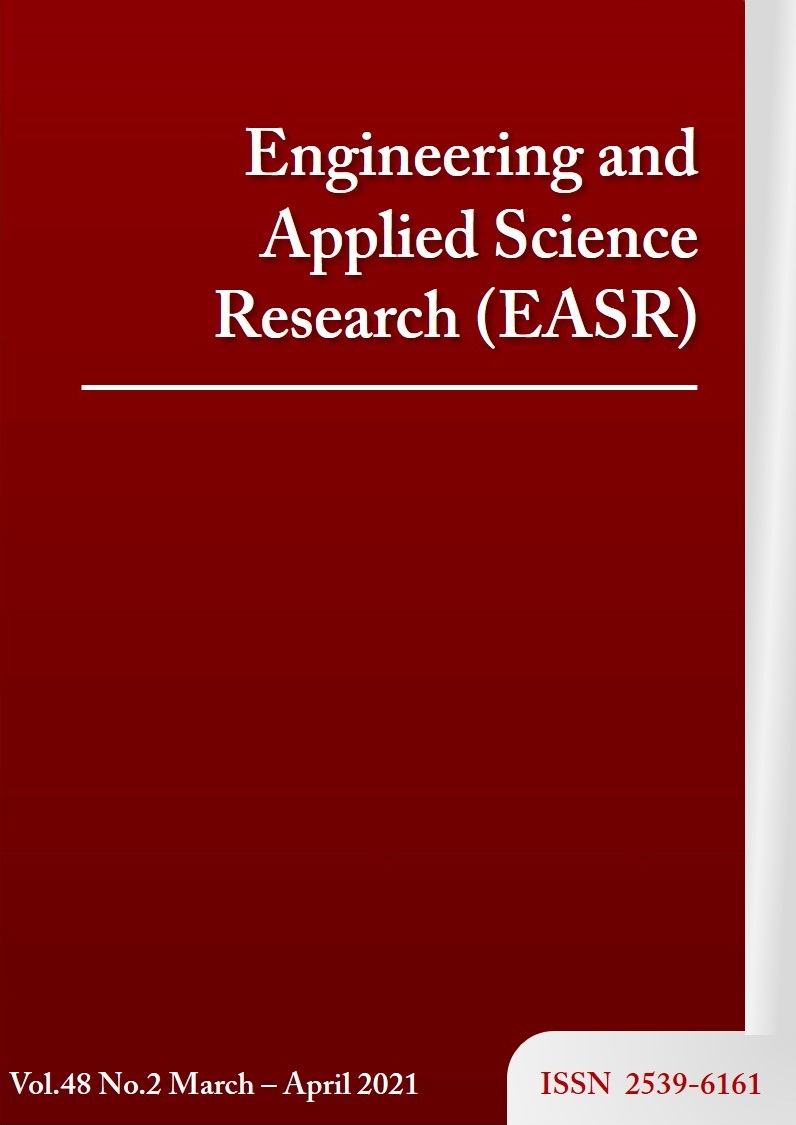Optimization and comparative analysis of silicon and chromium powder-mixed EDM process by TOPSIS technique
Main Article Content
Abstract
Powder mixed electric discharge machining (PMEDM) is an advancement in electric discharge machining (EDM) to overcome the problem of low material removal rate and surface finish in the conventional EDM process. In the PMEDM process, metallic or non-metallic powders such as silicon, aluminum, graphite, etc. are mixed in the dielectric fluid. In the present work, Response surface methodology (RSM), in combination with Technique for the order of preference by similarity to ideal solution (TOPSIS) is adopted to effectively optimize the multi-performance characteristics for PMEDM of AISI D2 steel. The electrode used for the study is copper while the powders mixed in the dielectric fluid is silicon and chromium. The effect of input parameters such as current, pulse on time, and powder concentration on material removal rate, tool wear rate and electrode wear ratio is investigated. Analysis of variance (ANOVA) and the main effect plots are generated to determine the significant parameters. For silicon powder-mixed dielectric fluid, the optimum values of current are 8A, pulse on time is 150 µs and powder concentration is 2 g/l while for chromium powder-mixed dielectric fluid, the optimum values of current are 10A, pulse-on time is 200 µs and powder concentration is 2 g/l. The silicon powder-mixed and chromium powder-mixed processes are compared by considering the electrode wear ratio as the response variable. The minimum and average electrode wear ratio for the silicon powder-mixed process is 0.0050 and 0.0093 respectively while for chromium powder-mixed process, the minimum and average values are 0.0025 and 0.0070 respectively. From the comparison, it is evident that the electrode wear ratio is lower for the chromium powder-mixed process.
Article Details
This work is licensed under a Creative Commons Attribution-NonCommercial-NoDerivatives 4.0 International License.
References
Mandaloi G, Singh S, Kumar P, Pal K. Effect on crystalline structure of AISI M2 steel using copper electrode through material removal rate, electrode wear rate and surface finish. Measurement. 2015;61:305-19.
Mandaloi G, Singh S, Kumar P, Pal K. Effect on crystalline structure of AISI M2 steel using tungsten–thorium electrode through MRR, EWR, and surface finish. Measurement. 2016;90:74-84.
Zhao WS, Meng QG, Wang ZL. The application of research on powder mixed EDM in rough machining. J Mater Process Tech. 2002;129(1-3):30-3.
Abbas NM, Solomon DG, Bahari MF. A review on current research trends in electrical discharge machining (EDM). Int J Mach Tool Manufact. 2007;47(7-8):1214-28.
Yan BH, Wang CC, Liu WD, Huang FY. Machining characteristics of Al2O3/6061Al composite using rotary EDM with a disk-like electrode. Int J Adv Manuf Tech. 2000;16(5):322-33.
Abdullah A, Shabgard MR, Ivanov A, Shervanyi-Tabar MT. Effect of ultrasonic-assisted EDM on the surface integrity of cemented tungsten carbide (WC-Co). Int J Adv Manuf Tech. 2009;41:268-80.
Srivastava V, Pandey PM. Performance evaluation of electrical discharge machining (EDM) process using cryogenically cooled electrode. Mater Manuf Process. 2012;27(6):683-8.
Kansal HK, Singh S, Kumar P. Parametric optimization of powder mixed electrical discharge machining by response surface methodology. J Mater Process Tech. 2005;169(3):427-36.
Kansal HK, Singh S, Kumar P. Effect of silicon powder mixed EDM on machining rate of AISI D2 die steel. J Manuf Process. 2007;9(1):13-22.
Ojha K, Garg RK, Singh KK. Experimental investigation and modeling of PMEDM process with chromium powder suspended dielectric. Int J Appl Sci Eng. 2011;9(2):65-81.
Tripathy S, Tripathy DK. Multi-attribute optimization of machining process parameters in powder mixed electro-discharge machining using TOPSIS and grey relational analysis. Eng Sci Tech, Int J. 2016;19(1):62-70.
Waghmare C, Sohani MS, Shirguppikar SS. Investigation of an Effect of Silicon and Aluminum PMEDM on Surface Integrity of AISI D2 Steel. Int J Mech Eng Tech. 2019;10(8):137-49.
Singh A, Singh R. Effect of powder mixed electric discharge machining (PMEDM) on various materials with different powders: a review. Int J Innov Res Sci Technol. 2015;2(3):164-8.
Pradhan MK, Biswas CK. Multi-response optimization of EDM of AISI D2 tool steel using response surface methodology. Int J Mach Mach Mater. 2011;9(1-2):66-85.
Kolahan F, Bironro M. Modeling and optimization of process parameters in PMEDM by genetic algorithm. World Acad Sci Eng Technol. 2008;48(12):480-4.
Montgomery DC. Design and analysis of experiments. 9th ed. New York: John Wiley & sons; 2017.
Lai YJ, Liu TY, Hwang CL. Topsis for MODM. Eur J Oper Res. 1994;76(3):486-500.



